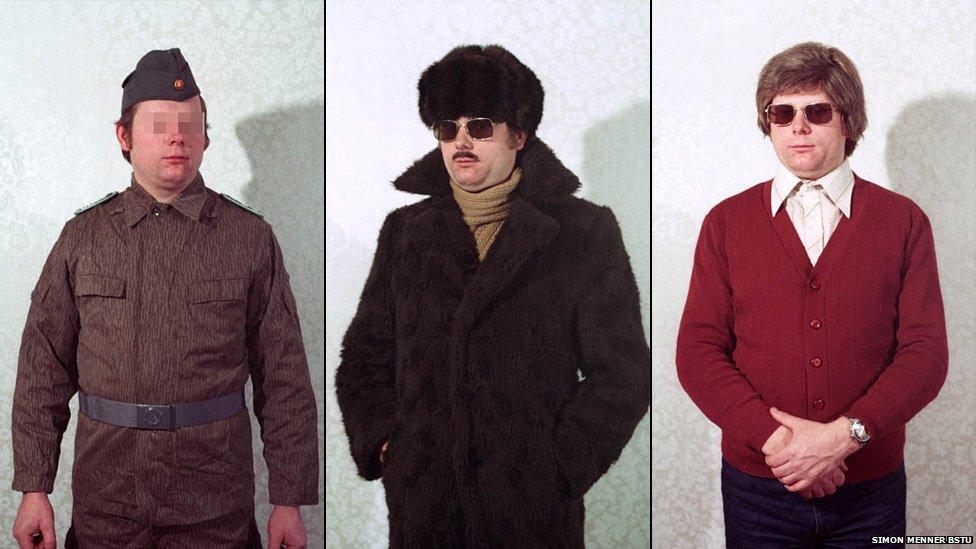In pictures: Secret disguises of the Stasi
- Published

East Germany's Ministry for State Security - better known as the Stasi - had a reputation for being one of the most feared intelligence agencies in the world. But a collection of photos unearthed by Berlin-based artist Simon Menner from the agency's archives reveals another side to their undercover work.
Mr Menner spent two years trawling through previously confidential and unreleased paperwork for his book Top Secret: Images from the Stasi Archives. In the course of his research he found a series of images documenting the unusual disguises used by Stasi personnel.
Mr Menner says that while the disguises today look as if the agents may be attending a fancy dress party, the fact is that the Stasi was one the most effective and repressive intelligence and secret police agencies in the world.
The archive discovered by Mr Menner shows techniques used by Stasi agents to relay secret signals. The agency was founded in 1950, and employed about 274,000 people until it was disbanded in 1989.
Mr Menner's collection contains several photographs of Stasi agents receiving fake moustaches and beards. It is estimated that the Stasi maintained greater surveillance over its own people than any secret police force in history.
Mr Menner found several photos taken at the birthday party of a senior Stasi official in which guests were told to come disguised as members of demographic groups under Stasi surveillance. They included athletes, peace activists, soccer players and religious figures.
Many of the images were found by Mr Manner in a Stasi handbook of disguises produced for training purposes. The goal of the catalogue was to "simplify the selection of a disguise for a specific task when out in the field". The disguises were arranged according to types of professions.
There are several images of staged Stasi arrests carried out for training purposes. Dissidents, in some case already serving long prison terms, were sometimes made to re-enact their own arrest for the camera.
Most photos of Stasi personnel were not allowed into the public domain. It is estimated that Stasi employed one full-time agent for every 166 East Germans, and roughly one-in-seven East Germans was a Stasi informer.